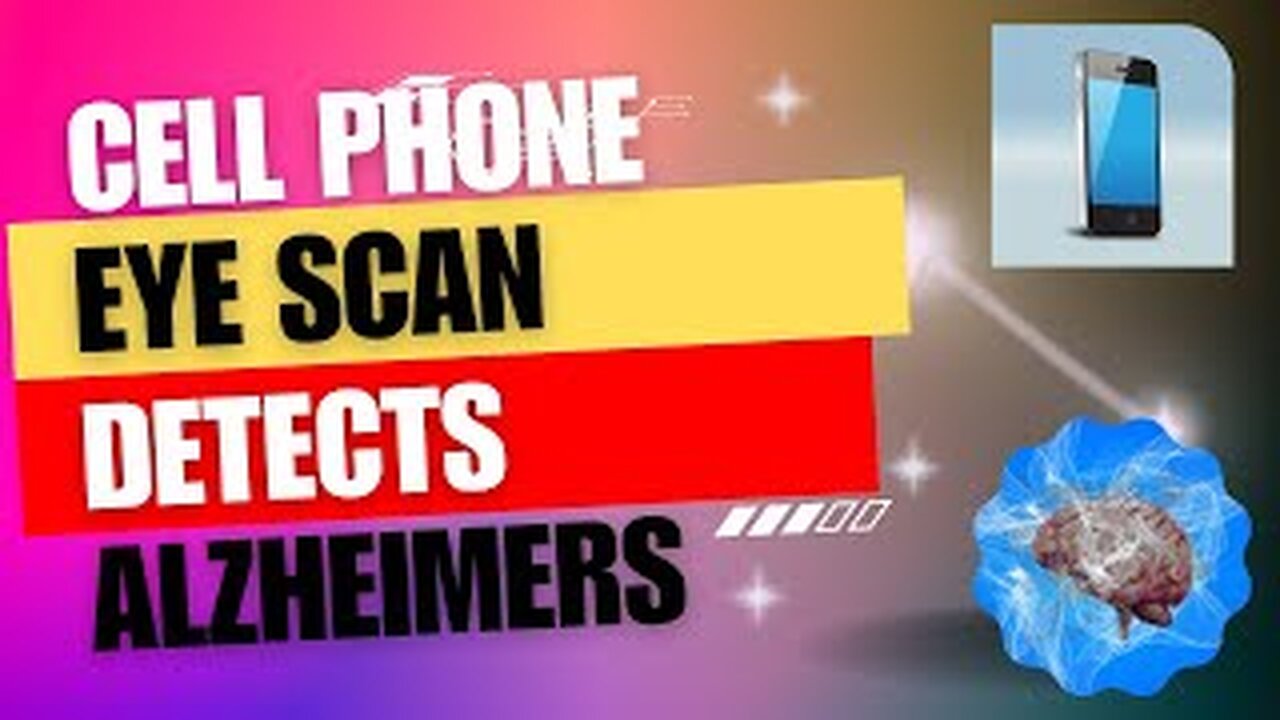Premium Only Content

Revolutionizing Early Detection: Eye Scan Technology on Cell Phones for Alzheimer's
In a groundbreaking leap forward, scientists have developed a cutting-edge eye scan technology that could potentially revolutionize the early detection of Alzheimer's disease. This innovative tool, when integrated with cell phones, has the potential to serve as a non-invasive and accessible method for early diagnosis, allowing individuals to receive timely treatment and support. Let's delve into how this eye scan technology works and the potential impact it can have on the field of Alzheimer's research.
Understanding the Eye Scan Technology: The eye scan technology at the heart of this breakthrough is based on the principle that the eyes are not just windows to the soul but also a gateway to understanding various health conditions. Researchers have discovered that specific patterns and characteristics in the retinal blood vessels and the optic nerve can provide valuable insights into the presence of Alzheimer's disease.
Integration with Cell Phones: To make this technology widely accessible, scientists have successfully integrated the eye scan device with cell phones. Users can simply attach a small, portable eye scanning device to their phone cameras, allowing for quick and convenient screenings. The process is painless, non-invasive, and can be performed by individuals in the comfort of their homes.
The Diagnostic Process: When a user takes an eye scan using their cell phone, the captured images are processed through sophisticated algorithms. These algorithms analyze the unique patterns and structures within the retinal blood vessels and optic nerve, comparing them to a vast database of known Alzheimer's-related markers. Based on this comparison, the system can provide an indication of the likelihood of Alzheimer's disease.
The Potential Impact: The integration of eye scan technology with cell phones for Alzheimer's diagnosis holds immense potential. Early detection of Alzheimer's is crucial, as it allows for prompt intervention, better management of symptoms, and access to support services. By enabling individuals to self-administer regular eye scans, this technology empowers them to take proactive steps towards their cognitive health.
Moreover, the widespread use of this technology can contribute to a significant increase in data for Alzheimer's research. By collecting and analyzing the eye scan data from a large population, scientists can gain valuable insights into the progression of the disease, identify potential risk factors, and develop more effective treatments.
Conclusion: The marriage of eye scan technology and cell phones for Alzheimer's diagnosis represents a remarkable advancement. This non-invasive and easily accessible method has the potential to transform the way we approach early detection and intervention in Alzheimer's disease. As researchers continue to refine this technology, we can anticipate a future where the power to detect Alzheimer's lies in the palm of our hands, offering hope and improved quality of life for millions.
-
 1:02:58
1:02:58
Sarah Westall
2 hours agoMILITARY WHISTLEBLOWER: How Social Media Military Level Psyops are Manipulating You w/ Patrick Bergy
6.03K3 -
 30:41
30:41
Stephen Gardner
1 hour ago🔥WHITE HOUSE GETS UNEXPECTED BIG WIN!
10.4K10 -
 9:39
9:39
MattMorseTV
3 hours ago $0.31 earnedVance just DROPPED a BOMBSHELL.
10.4K40 -
 2:40:14
2:40:14
DooM49
3 hours agoThe Grind for Battlefield 6 Skins - A-10 Unlocked
672 -
 1:47:49
1:47:49
Jeff Ahern
4 hours ago $0.31 earnedThe Sunday Show!
120K4 -
 LIVE
LIVE
Spartan
2 hours agoExpedition 33, Halo Later on (Maybe)
54 watching -
 LIVE
LIVE
Meisters of Madness
1 hour agoFinals and Wuchang!
51 watching -
 LIVE
LIVE
Lofi Girl
2 years agoSynthwave Radio 🌌 - beats to chill/game to
208 watching -
 LIVE
LIVE
BBQPenguin_
3 hours agoTasking & PVP
31 watching -
 4:33:34
4:33:34
FrizzleMcDizzle
4 hours ago $0.01 earnedGladius, Creature of the Night - NEW NIGHTLORD - NightReign
6.49K